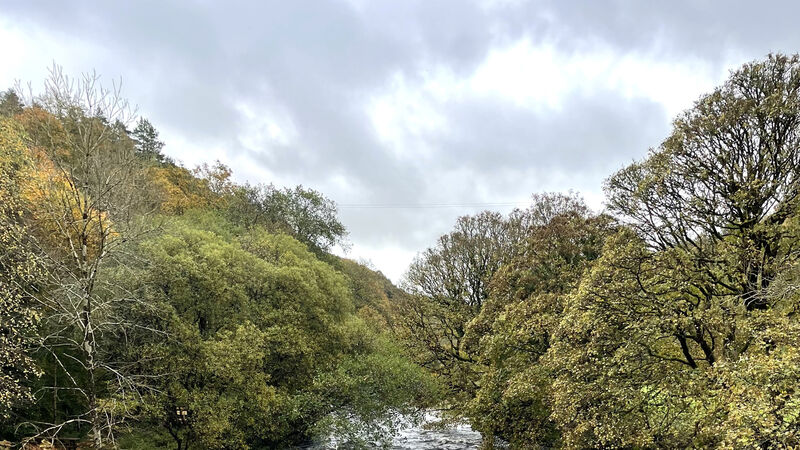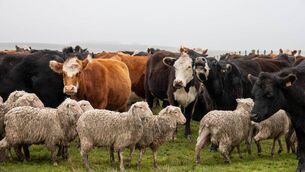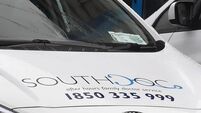Payments for water protection to be piloted in river catchment areas

Forestry is the main pressure in these areas, around the Avonmore River in Co Wicklow. Picture: Eamonn Farrell / RollingNews.ie
Results-based payments for water quality protection and improvement are on the way to landowners in two Co Cork areas.
The payments scheme will be piloted in the Shournagh area near Tower and Blarney in Co Cork, and the Awbeg area near Kanturk, Co Cork.
The payments scheme will also be piloted in the Island River area on the Galway-Roscommon border, a third area where the main pressure on water quality comes from agriculture, and the focus will be on engaging farmers with the scheme.
Two other areas are in the Waters of LIFE project to reverse the deterioration of Ireland’s most pristine waters. Forestry is the main pressure in these areas, around the Avonmore River in Co Wicklow, and Lough Graney in Co Clare. The results-based payments scheme will also be open to private forest owners.
The exact details of the scheme will be arranged in the coming months in consultation with stakeholders, including farmers from each of these five demonstration catchments.
Also involved is the Sheen River area in the Co Kerry side of the Beara peninsula, which will be used as a control river for the project, with a focus on understanding how the Sheen's high water quality is being maintained, and on identifying any potential threats to water quality through field surveys and monitoring.
Across the country, landowners, local authorities and communities will seek to improve water quality in each river catchment, using locally tailored solutions.
Ireland is one of a small number of EU member states that still has a number of high-status water bodies which are rich in biodiversity and show little or no impact from human activity.
The Waters of LIFE team based at Croom, Co Limerick, will roll out and test measures to protect high-quality waters in the five demonstration catchments.
Recommended measures have been published on how to deal with pressures from agriculture, forestry, peat extraction, quarrying, and domestic wastewater treatment systems, as part of the €20m EU-funded project, which is managed by the Department of Housing, Local Government and Heritage.
Minister of State Malcolm Noonan said: “The Results Based Payments Scheme offered as part of this project will support and reward efforts made by landowners, including farmers and foresters, to improve water quality in these five catchments.
"We’ve seen the success of this model in other LIFE projects, such as Wild Atlantic Nature LIFE IP, which granted in excess of €2.4m in payments in 2022. I encourage eligible groups in the areas around those catchments to get involved in the project.”
Waters of LIFE Project Manager Anne Goggin said EPA reports show deteriorating river and lake water quality, and the loss of high-status waters is of particular concern.
"Other water quality trends have well-understood cause and effect, with detailed plans in place to mitigate impacts. More actions are necessary to protect pristine water.
"We look forward to implementing these measures, continuing our work with landowners and communities to improve water quality across the five sites, with the support of the Results Based Payment scheme," she said.
Included in the project is the part of the Awbeg River, which rises near Liscarroll in Co Cork and flows south to join the main channel of the Blackwater, east of Banteer. Both water bodies in the catchment have a high-status objective. However, one has fallen to good status.
The significant water quality pressures in the area are agriculture and hydromorphology (the interaction of water, sediment, and vegetation). The catchment has a mix of areas which are considered high pollution impact for both phosphorus and nitrate.
In the Shournagh area, none of the three high-status objective water bodies currently meets their objective: one has fallen to good status and two to moderate status. All three are considered to be at risk of not meeting their River Basin Management Plan objectives.
The significant pressures identified on these water bodies are agriculture, hydromorphology, urban wastewater, domestic wastewater, and urban runoff. Maps produced by the EPA show very high pollution impact potential for nitrate, but very low for phosphorus.
The Shournagh River rises in the foothills of the Boggeragh Mountains and flows southeast towards Blarney, where it meets the river Lee. Dairy farming predominates in the area.
Most of the Sheen catchment in Co Kerry is at high-quality status and is considered to be not at risk of failing to meet its River Basin Management Plan objective. As a control catchment, it will be a location for trials of "soft" protection measures.
Potential pressures associated with agriculture in the Sheen area could include sheep overgrazing, disposal of sheep dip, sediment losses to water where land has been drained, and the movement of phosphate in poor drained scenarios.
However, agricultural intensity is low, with relatively few high-risk critical source areas for phosphate and nitrate. Pressures from forestry are on sites planted prior to best forest practices, especially on peat and on sloping lands.
The Waters of LIFE project will run until March 2028.











